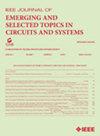从多视角光场生成全息三维内容的物理引导生成对抗网络
IF 3.7
2区 工程技术
Q2 ENGINEERING, ELECTRICAL & ELECTRONIC
IEEE Journal on Emerging and Selected Topics in Circuits and Systems
Pub Date : 2024-04-09
DOI:10.1109/JETCAS.2024.3386672
引用次数: 0
摘要
通过全息技术实现高保真三维(3D)场景呈现是一项艰巨的挑战,这主要是由于最佳全息图的未知机制以及巨大的计算负荷和内存占用。在此,我们提出了物理引导生成对抗网络(PGGAN),这是首个将多视角光场直接转换为全息三维内容的生成模型。PGGAN 将数据驱动学习的保真度与物理光学原理的严谨性和谐地融合在一起,确保了在宽视场范围内稳定的重建质量,这是目前以中心视场为中心的方法所无法达到的。提议的框架提出了一种创新的编码器-生成器-判别器,它以物理光学模型为基础。它得益于数据驱动方法的速度和适应性,可促进快速学习并有效转移到新场景,而其基于物理的指导可确保生成的全息图符合全息标准。独特的可微分物理模型有助于端到端训练,使生成过程与 "全息空间 "保持一致,从而提高重建光场的质量。PGGAN 采用自适应损失策略,在初始训练阶段动态调整物理引导的影响,随后优化重建精度。实证评估显示,PGGAN 能够在短短 0.002 秒内迅速生成详细的全息图,在速度上大大超过了目前最先进的技术,同时还能保持出色的角度重建保真度。这些结果表明,PGGAN 能有效地从多视角数据集快速生成高质量的全息图,大大推进了实时全息渲染技术的发展。本文章由计算机程序翻译,如有差异,请以英文原文为准。
Physically Guided Generative Adversarial Network for Holographic 3D Content Generation From Multi-View Light Field
Realizing high-fidelity three-dimensional (3D) scene representation through holography presents a formidable challenge, primarily due to the unknown mechanism of the optimal hologram and huge computational load as well as memory usage. Herein, we propose a Physically Guided Generative Adversarial Network (PGGAN), which is the first generative model to transform the multi-view light field directly to holographic 3D content. PGGAN harmoniously fuses the fidelity of data-driven learning with the rigor of physical optics principles, ensuring a stable reconstruction quality across wide field of view, which is unreachable by current central-view-centric approaches. The proposed framework presents an innovative encoder-generator-discriminator, which is informed by a physical optics model. It benefits from the speed and adaptability of data-driven methods to facilitate rapid learning and effectively transfer to novel scenes, while its physics-based guidance ensures that the generated holograms adhere to holographic standards. A unique, differentiable physical model facilitates end-to-end training, which aligns the generative process with the “holographic space”, thereby improving the quality of the reconstructed light fields. Employing an adaptive loss strategy, PGGAN dynamically adjusts the influence of physical guidance in the initial training stages, later optimizing for reconstruction accuracy. Empirical evaluations reveal PGGAN’s exceptional ability to swiftly generate a detailed hologram in as little as 0.002 seconds, significantly eclipsing current state-of-the-art techniques in speed while maintaining superior angular reconstruction fidelity. These results demonstrate PGGAN’s effectiveness in producing high-quality holograms rapidly from multi-view datasets, advancing real-time holographic rendering significantly.
求助全文
通过发布文献求助,成功后即可免费获取论文全文。
去求助
来源期刊

IEEE Journal on Emerging and Selected Topics in Circuits and Systems
ENGINEERING, ELECTRICAL & ELECTRONIC-
CiteScore
8.50
自引率
2.20%
发文量
86
期刊介绍:
The IEEE Journal on Emerging and Selected Topics in Circuits and Systems is published quarterly and solicits, with particular emphasis on emerging areas, special issues on topics that cover the entire scope of the IEEE Circuits and Systems (CAS) Society, namely the theory, analysis, design, tools, and implementation of circuits and systems, spanning their theoretical foundations, applications, and architectures for signal and information processing.
 求助内容:
求助内容: 应助结果提醒方式:
应助结果提醒方式:


